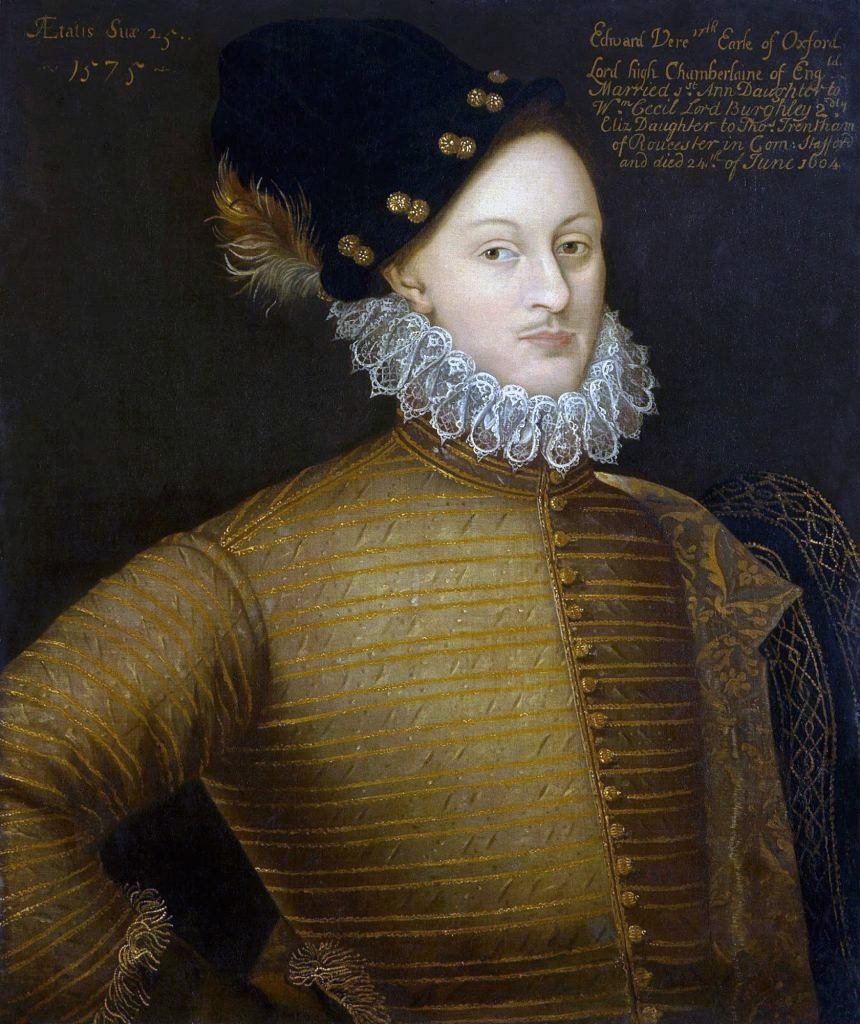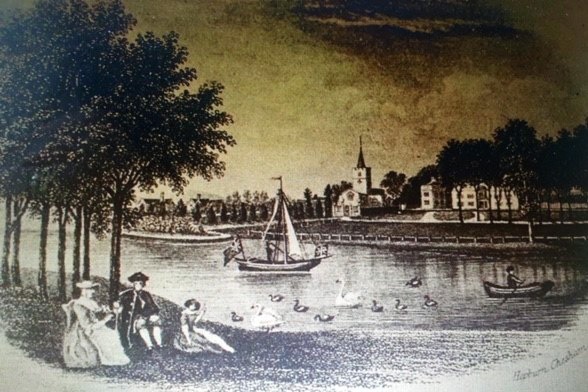Double dealing–skullduggery and fraud at the time of the Civil War
Sir Thomas Ashfield (1) 16th century–reign of Queen Elizabeth I
This Sir Thomas Ashfield was the Bailiff to the 17th Earl of Oxford, Edward de Vere (1550—1604).
Oxford was only 12 years old when his father died and he inherited the title of one of the oldest and wealthiest earldoms in England.
Due to his young age, he became a royal ward of Queen Elizabeth 1st and lived for a time with Sir William Cecil, one of the Queen’s chief advisers.
When he reached adulthood, he led an extremely lavish lifestyle and was permanently in debt despite all his holdings, which he gradually sold off to support his way of life.

Oxford’s holdings included extensive land and property in and around Chesham. The parish of Chesham originally consisted of several manors, the two major ones being Chesham Higham and Chesham Bury.
The 3rd Earl of Oxford had acquired the manor of Chesham Higham through marriage in 1452 and in 1486, the King (Henry VII) had added the manor of Chesham Bury to his holdings as well.
Back in those days, a manor was not just a house where the Lord of the Manor lived. Indeed the de Veres never occupied any of their Chesham manors but lived elsewhere. The manor of those days would have been more akin to our Town Council nowadays as it was an administrative headquarters for the area.
The 17th Earl was noted by his contemporaries as a poet and court playwright, but his volatile temperament precluded him from attaining any government responsibility and contributed to the dissipation of his estate.
A champion jouster, Oxford travelled widely throughout France and the many states of Italy. He was among the first to compose love poetry at the Elizabethan court and was praised as a playwright, though none of the plays known as his survive.
A stream of dedications praised Oxford for his generous patronage of literary, religious, musical, and medical works,and he patronised both adult and boy acting companies, as well as musicians, tumblers, acrobats and performing animals.
He fell out of favour with the Queen in the early 1580s and was exiled from court and briefly imprisoned in the Tower of London when his mistress, Anne Vavasour, one of Elizabeth’s maids of honour, gave birth to his son in the palace.
Oxford died in 1604, having spent the entirety of his inherited estates, which covered large areas of the country in Cornwall, Staffordshire, Wiltshire, Devon, Buckinghamshire, Essex and London.
At one point, his Bailiff, Sir Thomas Ashfield, lent his master £1,500 and was repaid in 1579 by being given all the Earl’s holdings in Chesham – the manors of Chesham Bury, Chesham Higham and the ecclesiastical manor of Chesham Leicester.
Chesham was originally the largest and one of the wealthiest ecclesiastical parishes in England and as such, was claimed by two different religious institutions – Woburn Abbey and the Abbey of St. Mary du Pre in Leicester who each put their own vicar into Chesham.
The two benefices were eventually amalgamated and the ecclesiastical manor of Chesham Leicester was acquired by the Earls of Oxford and included a house situated in what is now Lowndes Park where the Guide Hut and Bowling Green are today and thus the Ashfields became the wealthiest family locally due to the extent of their holdings. This state of affairs continued until the English Civil War.
Sir Thomas Ashfield (2) 17th century–time of the Civil War (1640-1660)
This Sir Thomas inherited all the estates in Chesham as it was his grandfather’s uncle who had been gifted all the lands and property in Chesham in 1579.
He was a Catholic and a Royalist sympathiser in a town which supported the Parliamentarians and had a very large non-conformist population.

He was heavily fined for his beliefs and imprisoned in 1643 for not being able to pay these fines. He found himself in the Fleet prison where the Prison Warden was Jeremy Whichcote (1614-1677). Whichcote pretended to be a parliamentarian but was in reality a secret Royalist sympathiser.
He was able to ensure that the Royalist prisoners in his care were well treated and when King Charles II returned to England, he rewarded Whichcote with a baronetcy for his work behind the scenes.
In the case of Ashfield, Whichcote persuaded him in 1656 to sign over all his properties in Chesham to him, assuring him that he would firstly pay off the fines, secondly give Ashfield an annual annuity of £200 and lastly return all his property to him when he was released from prison, having taken out expenses incurred.
But Whichcote reneged on the deal. He didn’t pay the fines, he never paid Ashfield the annuity and he hung on to all the property in Chesham and also kept all the rents and profits from them.
So, in 1658, Ashfield attempted to take him to court to have his property returned. Whichcote promptly had him rearrested and he was sent back to prison on the same charge as before – not having paid the fines that were due.

The white building behind the trees is Bury Hill House which once stood in Lowndes Park, Chesham
Following the restoration of the monarchy in 1660, in 1663 Ashfield petitioned Parliament to force Whichcote to return his property to him but he was unsuccessful, and all his Chesham holdings passed officially into the hands of the Whichcote family, who are believed to have been responsible for enlarging the modest house in Lowndes Park into the vast mansion which we now know became Bury Hill House.
Thus, the Ashfields passed out of the history of Chesham and back into the obscurity from which they had come in the previous century. They are remembered today by Ashfield Road on Hilltop Estate, Chesham.


